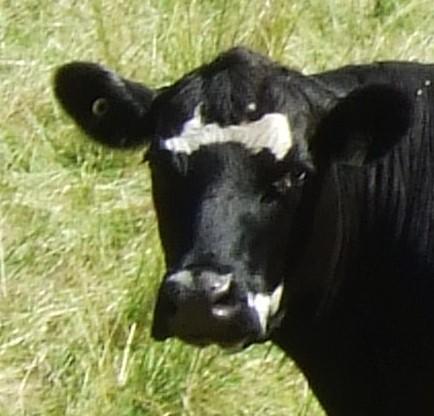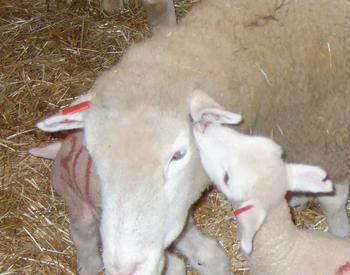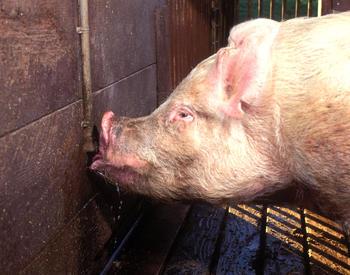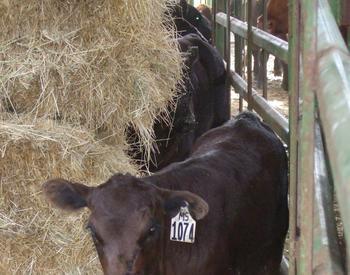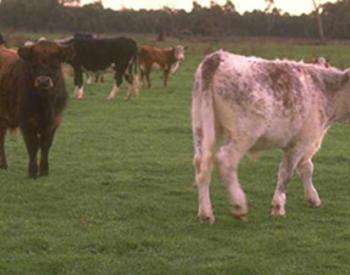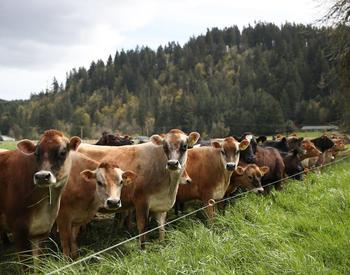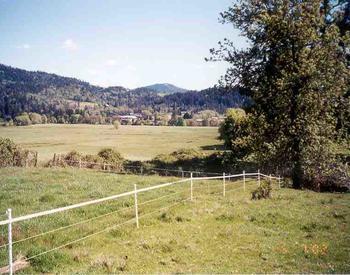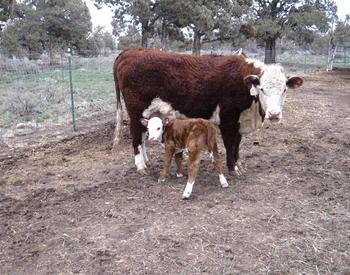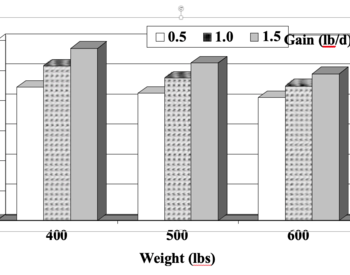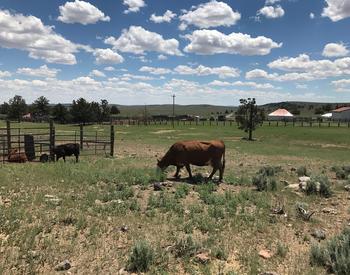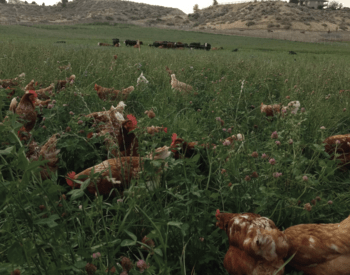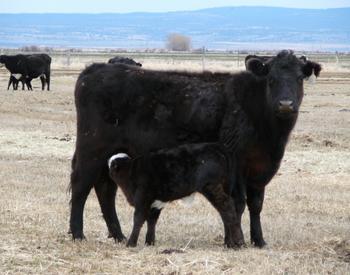Minerals are critically important for the health and well-being of livestock. Reproductive performance and growth are improved when animals consume proper amounts of minerals (and vitamins). Animals have specific requirements for these minerals and differ by species and level of production.
One problem many have is that cattle, sheep and goats are frequently pastured together. Since sheep are vulnerable to copper toxicity, a general livestock mineral mix without copper is usually fed to the group. But that leaves cattle and goats without proper copper in their diets. This article provides alternatives for supplementing different livestock.
Sheep options
Purchase or construct a small-area mineral feeding station that larger animals can’t access. One option is a stand-alone feeder out in the pasture (see figure 1). This creep feeder in figure 1 is for calves but you can purchase one for sheep or construct one yourself. Try searching on the internet for one that works best for you. You can build something like this from wood. Just make sure the slats are narrow enough and the top bar low enough to keep the calves out of it.
Another option is to reserve a pen, maybe near the barn, with a narrow entrance so that large animals are excluded. You can offer minerals in loose, tub or block form. Research shows that loose mineral mixes are eaten more evenly by the entire herd or flock, that is the intake is more consistent among animals.
Goat options
If you run goats with your sheep, you will have to be more creative. Some observe that goats do not eat supplements well when in block form. Apparently, their teeth are bothered by biting the blocks.
If you find this true with your goats, feed your sheep the block form and feed the goat mineral mix as loose or tub (lick) in a place the sheep can’t reach. That way the goats will not be full of sheep mineral mix and not want to eat theirs.
Cattle options
Cattle will eat any of the mineral forms mentioned above and they definitely require copper. So, you have to offer their minerals differently when housing them with sheep.
One suggestion is to use an elevated mineral stand that the sheep can’t reach. This is what the OSU beef specialist out of Burns, Julianna Ranches, uses (see figure 2) for her supplementation research.
If you have goats, I think a ramp too steep for sheep might work for goats to climb up onto the elevated stand. In this case you will need to enclose the mineral bins to where the goats won’t soil the product. This stand will work for the taller cattle, but smaller cattle might not be able to reach it. In that case you will have to use an alternative method or house sheep separately.
Alternative methods
“Hand feed” cattle and goats a loose mineral salt mix with copper. Use several buckets or long troughs with a small amount of mineral mix and offer that to the cattle everyday or three times a week if permitted (see mineral tag or label for restrictions). You might have to remove the buckets from the pasture if the cattle have not eaten their portion. That way the sheep won’t get into it.
If the livestock are not eating it in the short time you have it out there, you can mix one-quarter pound of ground barley plus the daily dose (check label for dose) of mineral mix for each head of cattle and make sure there is enough trough space for everyone to eat separately. You might have to stand out there and make sure the boss cows don’t hog it all. With the grain, the animals will eat fast.
Mineral injections are another option for providing copper to livestock. There are several restrictions such as:
- A veterinarian prescription required.
- Cautions against administering to frail, emaciated cattle.
- Beef quality issues if administered improperly (site and needle selection and use).
- Some form of restraint is needed to give the shots (squeeze chute or head catch are best).
After reading all this you may be discouraged at all the effort it takes to get minerals to your livestock. But, be assured that your efforts to properly supplement will pay dividends in the health and productivity of the animals. If you have a method or idea for supplementing livestock that is not included here, please share in the feedback field below and we will share it with others.
More resources on minerals
The objectives of this worksheet-style article are to help you perform an initial mineral assessment on the diets you are feeding your livestock, compare that to animal requirements and adjust if necessary.
PNW 670 publication: Mineral Supplementation of Beef Cattle in the Pacific Northwest
This bulletin will help ranchers to assess the mineral needs of their beef cattle and to start thinking about where to invest money on mineral programs and where to save a few dollars without diminishing animal performance. Topics covered include: determining deficiencies, antagonists, mineral interactions, symptoms of deficiency or toxicity for various macro and micro minerals, organic vs. inorganic minerals, and supplementation frequency. Minerals discussed include calcium, phosphorus, magnesium, potassium, sodium, sulfur, iron, selenium iodine, cobalt, molybdenum, copper, zinc and manganese.
This article was published in the September issue of the OSU Livestock and Forages Newsletter for Western Oregon.
